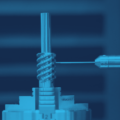When should you increase the cost of a product and why? Are there alternatives? What are the reactions of our customers? And, most importantly, how should we communicate this change to them?
Typically we need to increase the cost of a product for two reasons. The first is a result of a change in general contextual conditions (company or market-related): a rise in taxes, an increase in the costs of raw materials, changes in modes of transportation, the introduction of different packaging, and so on. The second reason is instead related to the fact that, with the passing of time, the product in question has undergone improvements and, as such, it now costs more: before I was selling an item and now I am selling another one and so the price has changed.
Is it possible to avoid increasing the cost of a product? Yes, but only up to a certain point because then it becomes problematic for our company (if not harmful). At MICROingranaggi, for example, we managed for a long time (I refer especially to the most critical economic situation years during which overall prices continued to rise) to keep the costs to the end customer unchanged thanks to a series of internal economic analyses which allowed us to improve our production efficiency. We reduced downtime and therefore that of production which allowed us to reduce certain fixed costs. The optimisation of business expenses and of the miscellaneous supplies also meant that we were able to benefit from savings on those fronts.
Thus for a long time these analyses allowed us to offset the increase in internal expenditure, keeping mostly unchanged the costs of our products to the end customers. Beyond a certain threshold, however, we also inevitably found ourselves having to resort to increasing prices.
Having to inform the customer of an increase in the cost of a product is never easy: Sometimes they “turn a deaf ear” while others don’t really understand the reasons for it. It is in any case likely that we will have an unhappy customer and that, more often than not, they will be looking for a discount rather than an increase of a cost. Therefore, the new price must be commensurate with the product in question and with its market value because it is very probable (and right) that the customer will make their own enquiries to collect the facts for comparison and subsequent evaluation before deciding whether to continue trading with us or to change providers.
An awareness of the reasoning behind a price increase will therefore allow us to explain to our customer why that decision was taken. Conversely when, for example, a company decides to increase a price without having demonstrable concrete reasons and solely to increase their earnings, it will probably remain trapped in a difficult situation with all the resulting consequences.



